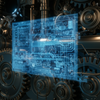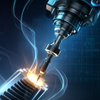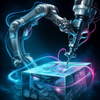Precision Power: CNC Machining for Industrial Equipment
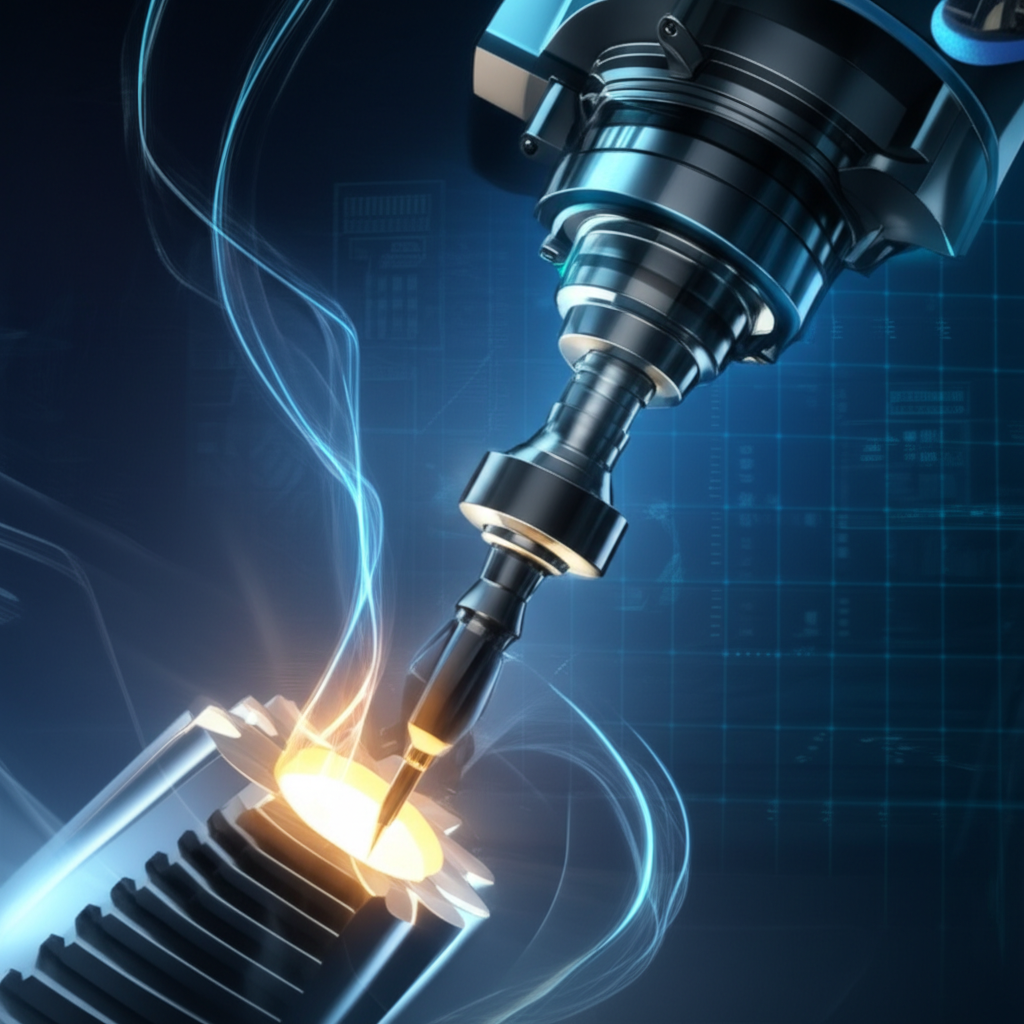
TL;DR
CNC machining for industrial equipment is a highly automated manufacturing process that uses computer software to direct machinery in cutting and shaping materials into precise components. This technology is essential for producing industrial parts because it achieves extremely tight tolerances, ensures perfect consistency for mass production, and significantly reduces the potential for human error, making it vital for creating reliable and complex equipment.
Understanding the Fundamentals: What Is CNC Machining?
Computer Numerical Control (CNC) machining is a subtractive manufacturing process that has revolutionized modern industry. At its core, the process involves taking a block of material, such as metal or plastic, and systematically removing layers with precision cutting tools to create a final product. Unlike traditional methods that require manual operation, CNC machining is almost entirely automated. The entire operation is guided by pre-programmed computer software, which translates a digital design into a set of detailed instructions for the machinery.
The workflow begins with a digital blueprint, typically a 2D or 3D model created using Computer-Aided Design (CAD) software. This digital file contains every geometric detail of the final part. The design is then processed by Computer-Aided Manufacturing (CAM) software, which converts the model into a specific programming language, most commonly G-code. This code dictates every action the machine will take, from the movement of the cutting tools to the speed of the spindle and the feed rate of the material.
Once the program is loaded onto the CNC machine, the automated process begins. The machine's control unit interprets the code and directs the cutting tools along multiple axes to shape the workpiece with incredible accuracy. This automation stands in stark contrast to manual machining, which relies on the skill and steady hand of a human operator using levers and wheels. CNC technology eliminates the variability inherent in manual processes, leading to a level of precision and repeatability that is impossible to achieve by hand. While the process is automated, skilled machinists are still crucial for setting up the machines, performing test runs, and ensuring the final products meet exact specifications.

The Core of Production: Key Types of Industrial CNC Machines
The versatility of CNC machining stems from the wide array of specialized machines available, each designed for specific functions and materials. Understanding these core types is key to appreciating their collective impact on industrial production. While there are many variations, several key types form the backbone of modern manufacturing facilities.
- CNC Milling Machines: Mills are among the most common CNC machines. They use rotating multi-point cutting tools to remove material from a stationary workpiece. They are incredibly versatile and can perform a wide range of operations, including drilling, boring, and creating complex three-dimensional shapes. Industrial mills often feature multiple axes of movement (from 3 to 5 or more), allowing them to produce highly intricate components like engine blocks and complex molds.
- CNC Lathes (Turning Machines): In contrast to mills, lathes rotate the workpiece at high speeds while a stationary cutting tool removes material. This process, known as turning, is ideal for creating cylindrical or conical parts, such as shafts, pins, and pistons. CNC lathes offer superior precision and speed compared to their manual counterparts and are fundamental in manufacturing symmetrical components that require high accuracy.
- CNC Routers: Similar in principle to milling machines, CNC routers are typically used for cutting softer materials like wood, plastic, foam, and composites. They excel at creating large, flat items like signage and cabinetry but are also capable of producing complex 3D carvings and prototypes. Their ability to quickly and accurately cut large sheets of material makes them invaluable in many fabrication shops.
- CNC Plasma and Laser Cutters: These machines use a focused energy source to cut through materials. Plasma cutters use a high-velocity jet of ionized gas (plasma) to melt and expel material, making them ideal for cutting thick metals like steel and aluminum. Laser cutters use a high-powered laser beam for the same purpose, offering even greater precision and a finer finish, suitable for intricate patterns on metals, plastics, and even wood.
- Electrical Discharge Machines (EDM): EDM is a specialized process that uses electrical sparks to shape a workpiece. It is capable of creating extremely complex shapes and features with very tight tolerances that would be impossible with traditional cutting tools. This method is often used in the tool and die industry to create molds and for machining very hard metals.
Key Advantages: Why Industrial Equipment Relies on CNC Machining
The widespread adoption of CNC machining in the industrial sector is driven by a clear set of advantages that address the core demands of modern manufacturing: precision, consistency, and efficiency. These benefits are not just incremental improvements; they represent a fundamental shift in how high-performance equipment is produced.
Unmatched Precision and Tight Tolerances
Industrial equipment, from hydraulic systems to engines, requires components that fit together perfectly. CNC machines can achieve tolerances as tight as ±0.005 inches, a level of precision that is virtually impossible to replicate manually. This accuracy is critical for parts like engine pistons and hydraulic valves, where even microscopic deviations can lead to inefficiency, leaks, or catastrophic failure. The computer-controlled process ensures that every cut is exactly as designed, leading to superior performance and reliability. For projects requiring extreme precision, services like XTJ CNC Machining offer capabilities with tolerances as fine as +/- 0.005mm, handling everything from rapid prototypes to large-scale production.
Consistency for Mass Production
Once a program is created and verified, a CNC machine can produce thousands of identical parts with no variation. This repeatability is essential for mass production, ensuring that the first component off the line is exactly the same as the last. In the industrial equipment industry, this means that replacement parts are interchangeable and that large assemblies can be constructed with the confidence that every piece will fit perfectly. This consistency eliminates the time-consuming process of hand-fitting components and guarantees a uniform level of quality across the entire production run.
Enhanced Efficiency and Automation
Automation is at the heart of CNC machining's efficiency. Machines can operate 24/7 with minimal human supervision, drastically increasing production output. The process is also significantly faster than manual methods, as machines can execute complex cuts at high speeds without fatigue. Furthermore, advanced CAM software optimizes tool paths to minimize cutting time and material waste. This streamlined workflow reduces labor costs, shortens lead times, and allows manufacturers to respond more quickly to market demands.
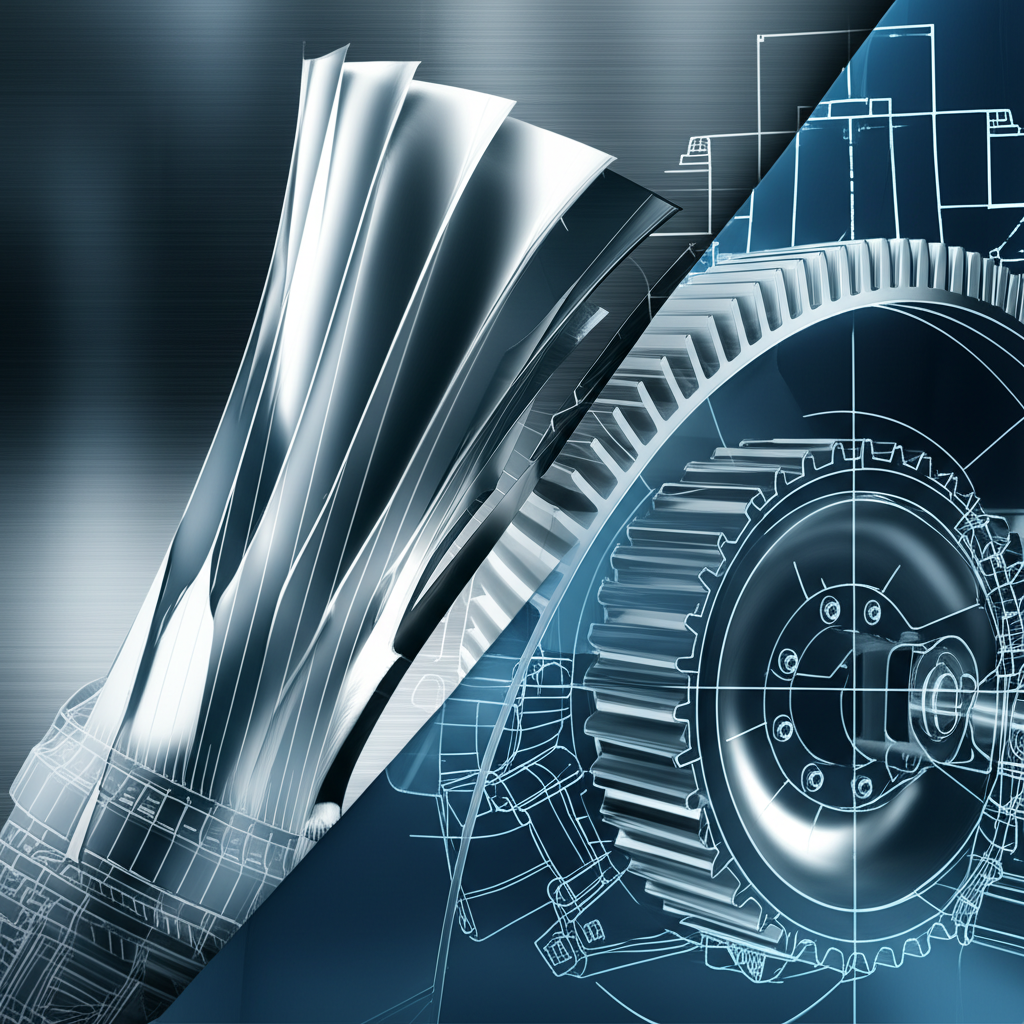
Applications Across Industries: Where CNC Machining Makes an Impact
The precision, versatility, and efficiency of CNC machining have made it an indispensable technology across a vast range of industrial sectors. Its ability to work with durable materials and create complex components ensures that equipment can withstand harsh conditions and perform reliably. From the depths of an oil rig to the skies, CNC-machined parts are critical to operational success and safety.
Construction and Heavy Equipment
The construction industry relies on robust and durable machinery that can operate under extreme stress. CNC machining is used to produce critical components for excavators, bulldozers, and cranes. For example, it allows for the production of engine blocks, pistons, and hydraulic cylinders with the exacting tolerances needed for efficient performance and longevity. The structural integrity of booms, arms, and frames depends on precisely machined joints and connections that can withstand heavy loads without failure.
Aerospace and Defense
In aerospace, there is no room for error. Components must be lightweight yet incredibly strong, and they often feature complex geometries designed for aerodynamic efficiency. CNC machining is the only way to meet these stringent requirements, with some parts demanding tolerances as tight as 0.0002 inches. It is used to create everything from engine components and landing gear parts to airfoils and structural manifolds from materials like titanium and high-grade aluminum. Similarly, the defense industry relies on CNC machining for durable, reliable parts for communications equipment, vehicles, and weaponry that must perform in the harshest environments.
Oil and Gas
Equipment used in the oil and gas industry—whether on a drilling rig or in a refinery—must be incredibly durable and reliable to prevent costly downtime and ensure safety. CNC machining produces precise-fitting parts like valves, pistons, and cylinders that prevent leaks and failures under high pressure. Components for this sector are often made from corrosion-resistant metals to withstand exposure to harsh chemicals and environmental conditions, ensuring long-term operational integrity.
Automotive and Transportation
From high-speed trains to heavy-duty transport trucks, the transportation industry depends on dependable, long-lasting components. CNC machining is central to manufacturing everything from engine parts to transmission components and braking systems. The technology enables engineers to rapidly create and test prototypes, accelerating research and development for more efficient and powerful vehicles. The ability to mass-produce identical, high-precision parts ensures the safety and reliability of vehicles that millions of people rely on daily.
Frequently Asked Questions
1. Can a CNC machinist make 100k a year?
Yes, it is possible for a highly skilled and experienced CNC machinist to earn over $100,000 per year. According to ZipRecruiter, top machinist jobs can pay over $70,000 annually. Compensation depends on factors such as location, experience level, specialization (e.g., 5-axis machining), and the specific industry, with sectors like aerospace and medical device manufacturing often offering higher pay.
2. What is the hourly rate for a CNC machine?
The hourly rate for operating a CNC machine varies widely based on the machine's complexity, location, and the services included. On average, a 3-axis CNC machine might cost between $50 and $100 per hour. More advanced 5-axis machines, which can handle more complex parts, can cost $100 to $150 or more per hour. These rates typically cover the machine's operation, maintenance, and the operator's time.
3. How much does it cost to have something CNC machined?
The total cost to have a part CNC machined depends on several factors. The primary costs include the raw material, the setup time for the machine, and the actual machining time (based on the hourly rate). The complexity of the part's geometry, the required tolerances, the material being used, and the quantity of parts being produced all significantly influence the final price. Simple parts in large quantities will have a lower per-unit cost than a single complex prototype.
-
Posted in
Automated Machining, cnc machining, Heavy Equipment, Industrial Manufacturing, precision engineering


